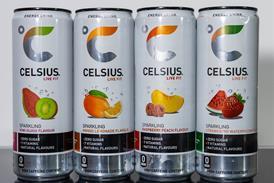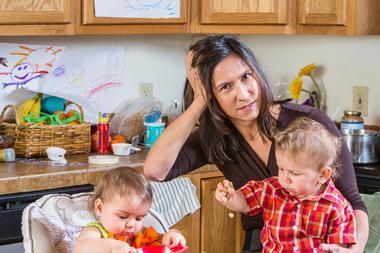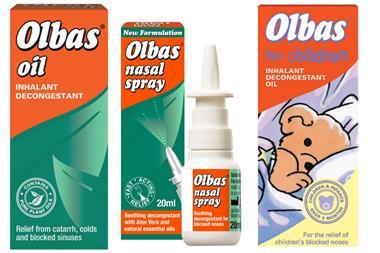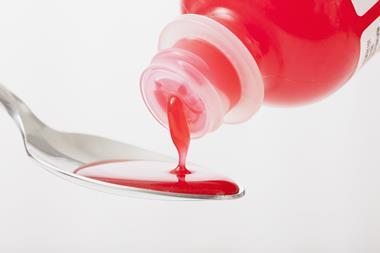Babycare may not be the biggest category by a long stretch, but get it right and you can secure the loyalty of many a tired parent and their offspring for years to come.

“I believe the children are our future,” warbled Whitney Houston in her evergreen 1985 global smash ‘The Greatest Love of All’. It’s a sentiment c-store retailers should take straight to heart.
Engage with pre-school nippers (plus their sleep-deprived parents) now and the chances are they’ll be back in 10 years’ time spaffing pocket money with you. It’s also about doing what comes naturally to c-stores: being a friendly port of call in the local community.
Take Justin Turpin’s Spar store in Greenbank Road, Bristol. His family-friendly approach helps drive sales in the baby section and beyond. “We’re a small community shop who have been here for 53 years in a residential area,” he says. “That means we know everyone who comes in, including the families. We’ve employed people behind the counter who first came in as babies in their mothers’ arms. And that’s our biggest selling point.”
Justin says that the stock across his kids/baby section is “very fluid”. He explains that the key to staying ahead is by listening to what his regulars want.
“Our female staff are really great at engaging with mums-to-be,” he says. “That gives us a heads-up on babies in the area. So when the parents come in to show off a new baby we can make sure we’re stocking everything they need.”
Stuart Cordner, owner of a Spar in Dundonald, Northern Ireland, also positions himself close to the source: his store is right opposite a hospital. This means he’s got tales of pregnant women rocking across the road in hospital gowns and the excited dad who came in last week direct from the birth of twins.
“It’s really important we do the whole range in baby care,” he says. “It’s one of those categories that’s influenced by brands. If parents always have one particular kind of cotton bud or whatever, they’re not going to change. So it’s not value-led, rather it’s distress-led. If people need nappies now they’re not going to quibble over a few pence.”
He advises investing in a planogram that stretches right across the range. Starting with nappies (“we do the pull-ups, and the ones for older children, in all the main sizes”) right through to snacks, cotton wool and cotton buds (which is “huge for us”), plus medicines.
Yet, do enough customers really come in for baby stuff to make it worth stocking? “The penetration on baby care is very low in convenience,” admits Alice Dolling, HIM senior analyst. “For example, only 0.1% of till transactions in your average c-store contain a baby product.”
However, she points out that baby product shoppers are more likely to be on a lucrative top-up mission (particularly a distress mission) than other consumers. Also, rural c-stores are more likely to do well from the category, which can attract relatively well-off parents. “Shoppers are more likely to purchase baby care products from rural convenience stores,” she says. “Compared with the average c-store, baby care penetration is 1.3 times higher in rural neighbourhood stores [than elsewhere].
“They are also most likely to be ABC1, meaning there is scope for more premium baby care lines.”
When analysing the overall section, nappies sound like a bit of a no-brainer stock for distress shoppers. Yet this doesn’t always translate to sales on the shop floor.
“The nappy market has definitely evolved,” says Raj Chandarana, from Tara’s Londis in High Wycombe. “We’ve really moved away from the big brands. We used to do them, but they could only really offer us pricemarked packs at £4.99. That doesn’t give us much of a margin. So we’ve reduced our nappy stock to just two lines.”
So what does work for Raj? “Feeding!” he says unequivocally. “What we now focus on is the food and snacks. So that’s very much things like the Ella’s Kitchen pouches and the Kidilicious snacks. The big trend for us is organic.”
Stuart notes that Ella’s Kitchen is a great product for c-stores because “it’s got a cheap enough price point, the packaging is bright and colourful, and it meets all the current health trends”.
Organic also chimes with Justin. “The Organix snacks do particularly well for us in kids/baby – especially the carrot crisps.”
Another category to consider is kids’ medicine. But it’s worth checking out the competition first.
“We’re close to a chemist, so we have to keep an eye on the products they offer,” says Stuart. “However, we still do the products that customers are going to be in for when their children are in need, things like Johnson’s Baby Powder, Sudocrem and Children’s Nurofen.”
While baby care may not be the busiest of categories, there’s no disputing it’s all part of the c-store service.
Changing spaces
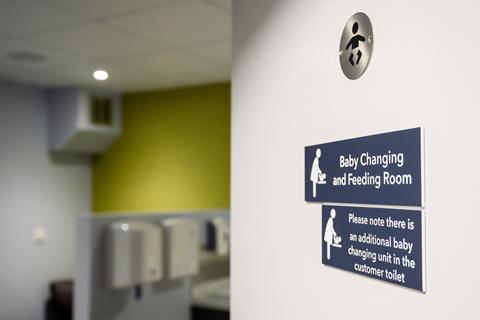
When Central England Co-operative gave its Wells-next-the-sea store a £25,000 makeover it didn’t skimp on parent-positive facilities. The refit included a new purpose-built infant feeding/baby changing facilities with dimmable lighting and even a music playback facility using Bluetooth.
“As a community-focused retailer, meeting the needs of who we serve is of vital importance to us, and that extends to the facilities we can offer to our customers and members,” says store manager Mark Dixon.
“The recent refit of the food store here in Wells-next-the-Sea gave us an ideal opportunity to act on feedback from members and customers who often highlight customer toilets and baby changing facilities as something they would like to see us offer.”
“The new facilities are of a really high quality and the reception we have had so far has been extremely positive, although we will have more of a clear idea once the busy summer period has finished and the facilities have been well used so we can hopefully get more feedback.








